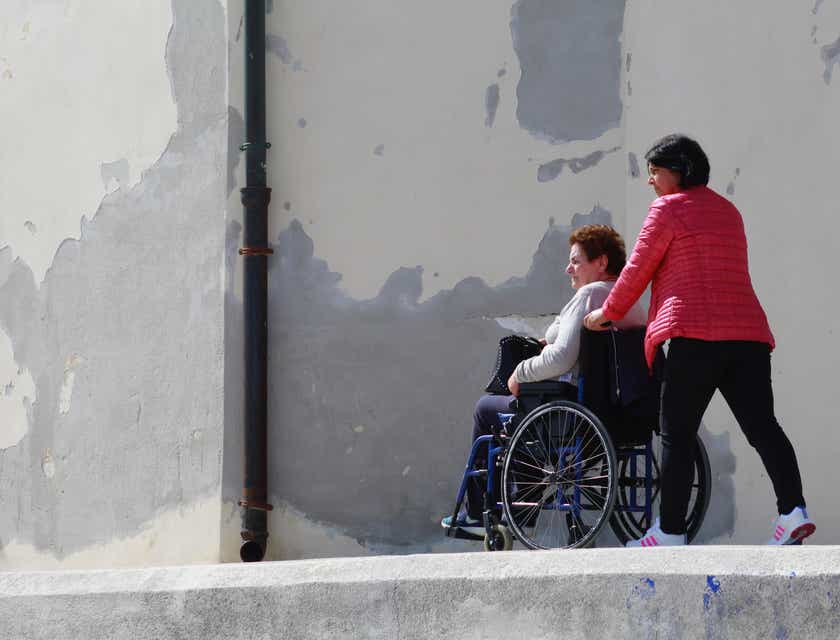Most seniors want to age in place, according to AARP, but sometimes the biggest threat to that goal is their home itself. Keeping seniors safe at home requires making adaptations that reduce risk and help meet daily needs. Whether you’re moving an aging loved one into your home or helping them stay in their existing home, this guide will help you plan modifications in the kitchen, bedroom, and bathroom.
In the Kitchen
The kitchen is the heart of your home, but for seniors with growing disability, it’s also a room rife with danger. Whether it’s a senior in a wheelchair trying to reach a pan on the back burner or a person with dementia eating expired food, it doesn’t take a house fire to land a person in the hospital. Ask these questions to assess your loved one’s function in the kitchen:
- Can she plan, prepare, and serve meals independently?
- Is she able to stand at the stove or sink for extended periods?
- Can she access controls on the stove, sink, and other appliances?
- Are cabinet handles and drawer pulls easy to use?
- Does she understand and practice safe food handling?
- Can she eat and drink without assistance?
Common kitchen adaptations include installing a stove with front controls and adapting counters, sinks, and appliances for wheelchair accessibility. Even if a senior doesn’t use a wheelchair, it may be more comfortable to sit while cooking. Cabinet hardware and kitchen utensils can be swapped out for ergonomic designs that are easier on arthritis. And of course, every kitchen should be equipped with working smoke detectors and fire extinguishers.
In the Bathroom
The bathroom is where 80 percent of senior falls happen, according to reporting by the National Safety Council, and it’s not hard to see why. Between slick surfaces, low toilets, and high tubs, this small room houses a lot of hazards. Consider these questions as you plan for modifications:
- Does the layout allow ease of movement?
- Can she get in and out of the tub or shower without help?
- Can she stand comfortably in the tub during bathing?
- Are faucets easy to use?
- Can she bathe and groom herself independently?
- Does she have trouble getting on or off the toilet?
- Is she experiencing incontinence?
All seniors benefit from non-slip flooring, a grab bar at the toilet, and a raised toilet seat. Redfin advises going further, suggesting that “Safety rails with textured grips, shower seats, transfer
seats, and roll-in showers are also valuable options to make bathing safer and easier for your loved one. A single lever for the faucet is usually easier to turn and operate than two separate knobs, so consider a new faucet head if necessary.” In addition, caregivers should account for incontinence in the elderly and install nightlights for overnight bathroom trips and locate the senior’s bedroom nearby a bathroom.
In the Bedroom
The bedroom is a senior’s safe space, so shouldn’t it be safe? Prevent accidents while dressing and sleeping by asking the following questions:
- Can she dress and undress independently?
- Does she select clothing appropriate for the weather and occasion?
- Is she able to get in and out of bed comfortably?
- Is nighttime visibility adequate?
- Are there clear, wide pathways through the room?
The biggest concerns in the bedroom are falls, incontinence, and dressing. Minimize bedroom furniture and secure area rugs and loose cords to eliminate trip and fall hazards and install nightlights or bedside lamps so the senior can see, even at night. If she frequently gets up to urinate at night, a bedside commode can help. If the bed is too low or too high for comfortable transfers, a bed rail or another adaptive device can aid getting in and out of bed. Seniors with balance problems benefit from a chair that allows them to dress while seated.
While these three rooms are the most hazardous in any home, they aren’t the only places that hold danger. Watch your family member as she goes through her daily activities so you can identify other areas where extra help is needed. Since seniors are often reluctant to admit when they need assistance, it’s up to you to stay aware of changing needs and adapt as necessary.







